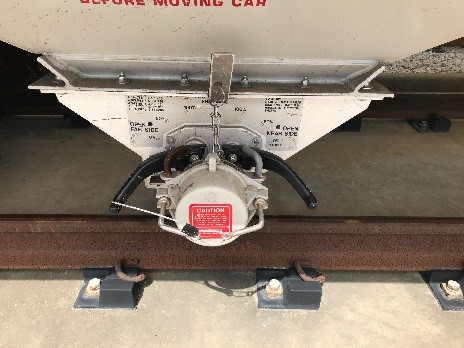Our approach to plastic management is comprised of three principles,
- Avoid spills outside of containment of pellets, powder and flake through effective equipment and system design
- Contain spills through proper operations, maintenance procedures and training
- Track and report plastic loss to continuously improve
We believe that a successful plastic management program should effectively implement these principles and utilize industry best practices. See examples of best management practices below:
General Facility Practices
- Properly designed drainage systems that direct water flow to dedicated sumps and recovery ponds. Continuous filtration systems are utilized to remove pellets or flake from storm water
- Sieves and screens located prior to water discharge points are routinely monitored
- Screens placed on storm water drains to reduce the risk of residual pellets entering storm water
- Collection and recycling of recovered pellets, powder and scrap material into dedicated collection containers
- Procedures in place to respond to and clean up spills
Loading and Unloading Areas

- Utilization of closed systems that minimize pellets lost during loading
- Cleaning stations (air and water) for outbound hopper cars and trucks
- Paved loading areas to facilitate cleanup of spilled pellets
- Utilization of vacuum systems and catch bins
- On-site personnel to provide cleanup and collection of internal pellet and powder spills
- Hopper cars are secured and resealed before returning to service
- Transfer lines and hoses are purged prior to disconnecting from hopper cars and trucks
Production Area
- Use of tarps and vacuum during maintenance activities
- Dedicated pellet, powder and scrap collection containers for convenient clean up and maintenance
- Plastic powder or flake containers covered before being transported
- Use of bag house filters to contain powder
- Skimmer pump and weir for storm water pumps to collect and separate pellets and flake carried by runoff
Converter
All best practices that have been developed for converters have been collected from our Performance Pipe division.
- Use dedicated bins for plastic debris from floor sweep and other activities that have covers
- Place spill kits in strategic areas in facility for quick cleanup of spills
- Vacuums strategically placed in facilities that are lightweight and easy for employees and contractors to utilize
- Regular inspections conducted on transfer piping
- Performance of regular housekeeping rounds
- Ensure equipment used produces minimal plastic debris (Ex: utilize saw technology that minimize creation of fines, etc.)
- Concrete berms around facility perimeter to prevent any residual debris from entering grassy or rocky areas
- Properly sized screens on storm drains and outfalls to serve as last line of defense to ensure plastics do not enter waterways
- Keep all containers holding plastic debris covered and in areas where they are not exposed to the weather
- Ensure no plastic debris is being landfilled; all plastic debris should be handled by an appropriate recycler to avoid risk of loss of debris during transportation to landfill
- Utilize screens on closed loop water system
- Utilize dedicated pellet containment bins to collect pellets that are covered and stored out of weather
- Ensure forklift operators responsible for transporting boxes are trained on how to respond to spills if they occur
- Samples only taken over paved areas, never over rocks
- Products are blown out for fine removal before being transported to laydown area
- Filters are emptied directly to plastic debris containers and vacuums are kept next to activities to clean up any spills prior to filter changeouts
- Ensure hopper cars and trucks are unloaded completely by cycling the valve while under vacuum before disconnecting hoses
- Purge transfer lines and hoses prior to disconnecting from hopper car or truck